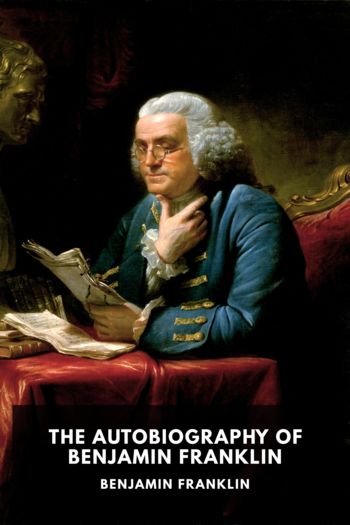Coldwater Revenge, James Ross [books for 9th graders txt] 📗

- Author: James Ross
Book online «Coldwater Revenge, James Ross [books for 9th graders txt] 📗». Author James Ross
“When his shift was over, he went back there. The house was empty… or at least dark. No one came to the door. Joey said that he walked around the house to see if there were any lights upstairs and while he was in the back he heard a boat pull away from the boathouse. He went down to look. There was no one inside except that fool bird that bit him. He didn’t say if it had both feet. The Chris Craft was gone and so was Billy.
“Your brother says he tore over to the marina and raced out to Wilson Cove in the patrol boat to see if he could catch whatever might still be there. He found the Pearce boat right away and Miss Pearce on board. Alone.”
“Running lights?”
“Dark as sin. The story Miss Pearce told your brother was that she came home when he called, but that her brother seemed to be better and wouldn’t hear about any doctor or hospital. She told Joe that she went down to the boathouse later with some food, and found her brother gone and the place a wreck. She said she could hear the sound of a boat heading out into the cove, running dark. So she took the Chris Craft and went after it. She said she didn’t find it, but thought that whoever it was, was still in the cove somewhere playing possum. So she turned off the boat lights and waited. That’s when your brother showed up in the patrol boat and put the spotlight on her—not on that other boat she says was hiding out there, with Billy still on it… or not.”
Tom paced the tiny room weighing the images in his mind. “Do you believe that story?”
“Of course not. And neither did your brother.”
“I mean his story, Mom.”
CHAPTER 24
Tom handed his driver’s license to the broad shouldered young man with a military haircut whose Chevy Suburban blocked the entrance to the Pearce driveway. “I’m Tom Morgan. A CDC doctor named Dyer asked me to join him down at the boathouse.” The young man made a call on the vehicle’s two-way radio then waved Tom in.
A stubby white trailer sat parked at the edge of a granite seawall, umbilically connected to the Pearce boathouse by a thick, orange power cable. Two men in stenciled windbreakers fiddled with a pair of satellite dishes on the trailer roof. Tom ducked beneath the strip of yellow tape and found the CDC toxologist inside the boathouse watching a periscope of black snorkel make slow figure eights in the shallow end of the empty boat slip. “You must be Tom Morgan,” he said. “I’m Doctor Dyer. My people picked up your brother about a half hour ago.”
“Is he going to be all right?”
Dyer frowned. “Since he’s not dead already, he’s got a good chance. Thankfully, he had the foresight to ask your local hospital to send our agency the medical reports on the fellow who used to live in this boathouse. My colleague recognized a compound in the deceased’s blood as something used by tanners to kill cows in the country he grew up in. It’s called abrin. Your brother is getting the standard course of treatment for ricin exposure, which is the closest compound that we have a protocol for. The next step is to find out where and how he got exposed.”
“I’ve got some ideas on that.”
The doctor gestured toward a stone bench above the seawall. “Let’s sit where I can take notes.”
Tom struggled to organize his thoughts and suppress everything else fighting for space inside a brain that did not have enough juice left to power the processor that was supposed to handle it all: murder, aborted romance, poisoning, impending financial ruin. His head hadn’t touched a pillow in thirty hours. “You’re going to want to talk to a man named Dave Willow,” he heard himself say. “He owns a bio-research company called NeuroGene out on Route 6. Also his former partner, Mike Sharp, and a Dr. Hassad who teaches at the University of Quebec at Montreal.” Tom gave the addresses as best he could remember. “Bring some muscle when you approach Dr. Hassad, if he’s still around.” He explained Hassad’s connection with NeuroGene, his facilitator role in the informal, cross-border dissemination of biological materials and Billy Pearce’s presumed role as an occasional courier.
“This Pearce fellow didn’t work at NeuroGene?”
“No. The NeuroGene owner claims he found Pearce in the company mail room late at night about two weeks ago. He says Pearce refused to explain what he was doing. My guess is he was there to send something out with the rest of the NeuroGene deliveries, or he was picking something up.”
As Dyer scribbled notes, a bandy-legged man wearing a diver’s wet suit waddled up from the boathouse holding a clear Plexiglas box with a pair of rubber gloves fit into one side of it. “Found this next to one of the pilings,” he huffed. “There’s a bunch of cement blocks down there. This was under one of them.”
“How deep is the water where you found it?” asked Dyer.
“Waist high, maybe.”
“That would be about right. Box it up and get it off to the lab.”
“About right for what?” asked Tom.
“For taking something used to kill a single cow and turning it into something designed to kill thousands.”
“Cows?”
“People.” Dyer explained, “One of the reasons there isn’t a lot of data on abrin toxicity is that the compound isn’t toxic in its natural state, which is inside the shell of the rosary pea. The pea is ornamental, and it’s often used in cheap jewelry. The toxic part is inside the shell, and its lethal use to date has been limited to killing cows, one at a time. But





Comments (0)